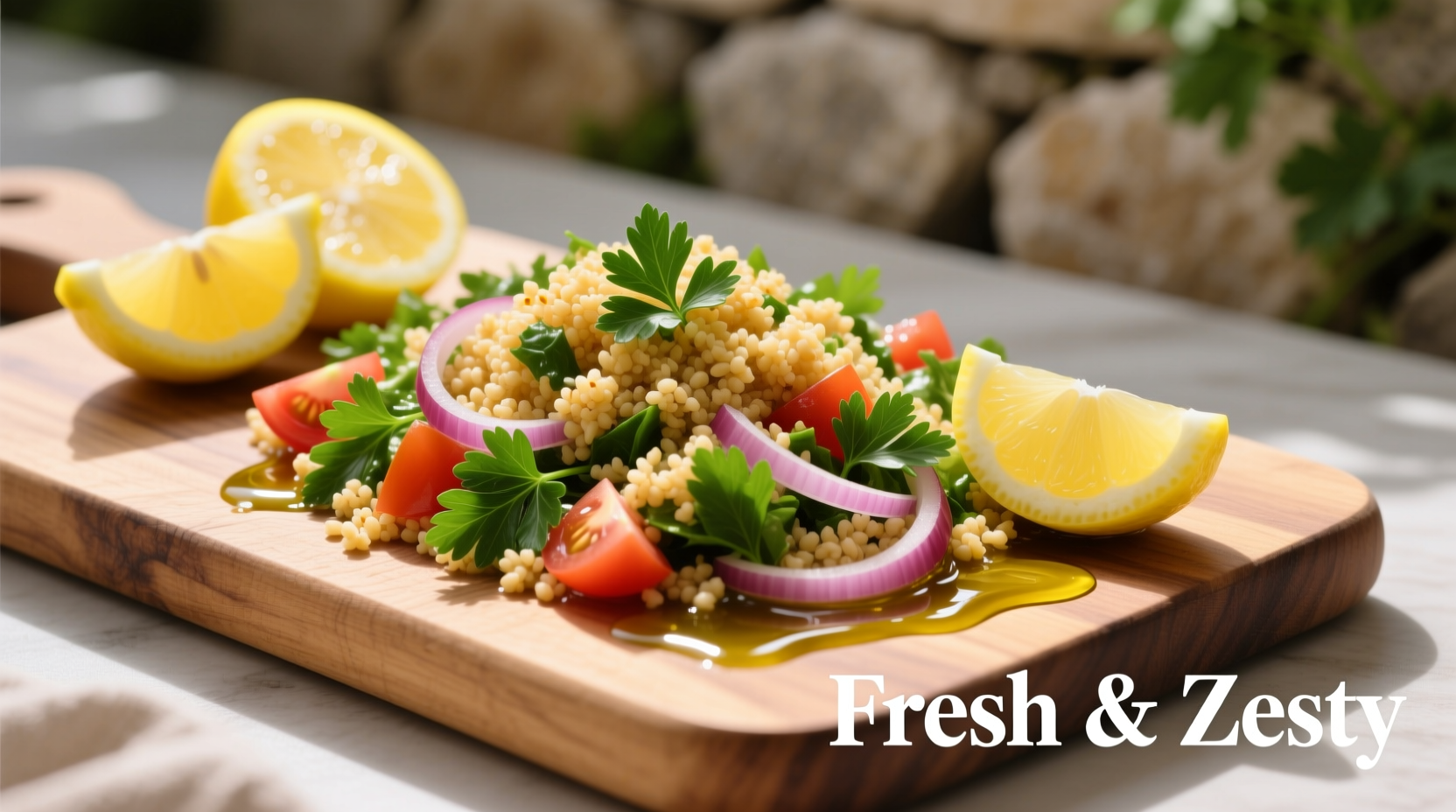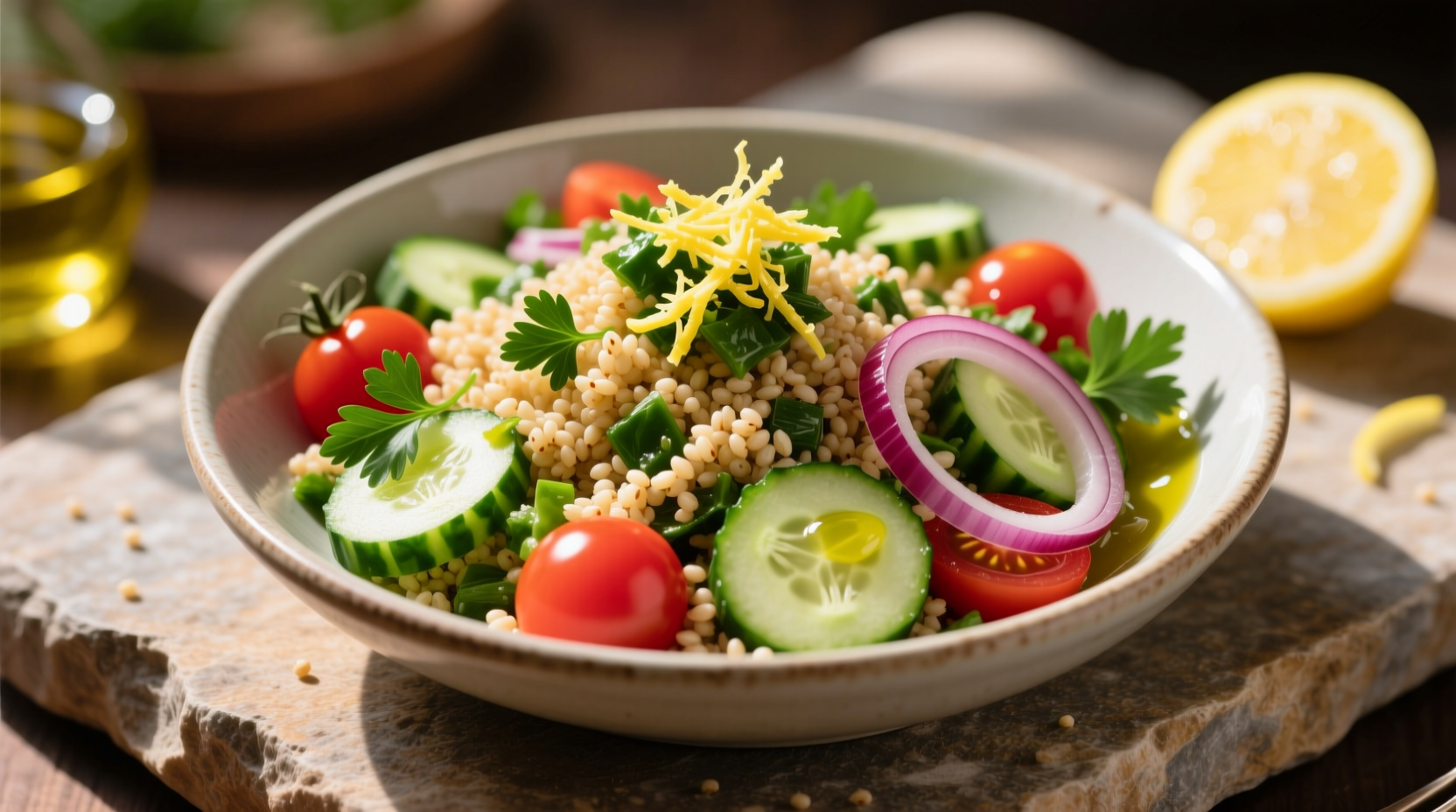Why This Classic Salad Deserves a Spot in Your Recipe Collection
Forget the dense, bulgur-heavy versions you might have tried. Authentic tabbouleh is predominantly a parsley salad with bulgur playing a supporting role. This Lebanese specialty offers remarkable nutritional benefits: one serving provides 30% of your daily vitamin C needs and 25% of vitamin K, according to USDA FoodData Central. The combination of fiber-rich bulgur and antioxidant-packed herbs creates a dish that's both satisfying and light—ideal for meal prep or summer entertaining.
The Cultural Journey of Tabbouleh: From Fertile Crescent to Global Table
Tabbouleh originated in the Levant region (modern-day Lebanon, Syria, Jordan, and Palestine) where bulgur wheat has been a staple since ancient times. Archaeological evidence from the University of Chicago's Oriental Institute shows bulgur preparation dating back to 4000 BCE in Mesopotamia. The dish evolved as a practical way to use abundant local herbs with minimal grain.
| Era | Key Development | Ingredient Ratio |
|---|---|---|
| Ancient (4000 BCE) | Bulgur preparation techniques developed | Primarily bulgur with herbs as garnish |
| Ottoman Period (1500s) | Herb-forward version emerges | Equal parts bulgur and herbs |
| Modern (20th Century) | Standardized as parsley-dominant | 3 parts parsley to 1 part bulgur |
Essential Ingredients for Authentic Flavor
The magic of bulgur and parsley salad lies in ingredient quality and proportions. Traditional tabbouleh uses fine-grain bulgur (#1 or #2 grind), which requires no cooking—just soaking. Coarse bulgur won't achieve the proper texture. For the herbs, use flat-leaf parsley (not curly) and fresh mint. The dressing must balance lemon juice and extra-virgin olive oil without vinegar.
Step-by-Step Preparation Guide
Preparing the Bulgur
Place 1 cup fine bulgur in a bowl and cover with 1¼ cups boiling water. Let sit for 15 minutes until water is absorbed, then fluff with a fork. Spread on a tray to cool completely—this prevents sogginess. Properly prepared bulgur should be tender but retain slight chew.
Chopping Technique Matters
Finely chop 2½ cups (about 4 large bunches) of flat-leaf parsley, removing thick stems. Chop ½ cup fresh mint leaves. The herbs should be minced small enough to distribute evenly but not pulverized. This traditional hand-chopping method releases essential oils better than food processors, which can bruise herbs.
Building Flavor Layers
In a large bowl, combine cooled bulgur, chopped herbs, 3 diced Roma tomatoes, and ½ finely diced red onion. For the dressing, whisk ⅓ cup fresh lemon juice, ⅓ cup extra-virgin olive oil, 1 teaspoon salt, and freshly ground black pepper. Pour dressing over salad and toss gently. Let rest 30 minutes before serving to allow flavors to meld.

When This Salad Shines (And When to Choose Alternatives)
Understanding context boundaries helps you serve tabbouleh at its best:
- Perfect for: Mediterranean meals, summer picnics, vegetarian entrees with grilled halloumi
- Avoid when: Serving very young children (chopping herbs finely enough can be challenging)
- Not ideal for: Make-ahead potlucks more than 4 hours (fresh herbs wilt)
- Substitute with: Quinoa tabbouleh for gluten-free needs (though texture differs)
Pro Tips for Restaurant-Quality Results
Seasoned chefs know these details make the difference:
- Tomato technique: Remove seeds and excess liquid to prevent salad from becoming watery
- Onion mellowing: Soak diced red onion in cold water for 10 minutes to reduce sharpness
- Herb freshness: Store parsley stems in water like flowers until ready to chop
- Dressing balance: Adjust lemon-to-oil ratio based on parsley quality (older parsley needs more acid)
Variations Worth Trying
While traditional tabbouleh stays simple, these thoughtful adaptations maintain authenticity:
- Spring version: Add ¼ cup chopped fresh dill and ½ cup diced cucumber
- Protein boost: Mix in ½ cup crumbled feta or toasted pine nuts before serving
- Winter adaptation: Substitute arugula for 25% of parsley for peppery notes
Serving and Storage Guidelines
Tabbouleh tastes best at room temperature. Serve in lettuce cups for a low-carb option or alongside grilled meats. Store leftovers in an airtight container for up to 2 days—the flavors actually improve slightly as they meld. Never freeze tabbouleh, as the herbs lose texture.
Nutritional Powerhouse: Why This Salad Belongs on Your Table
Per serving (1 cup), authentic tabbouleh provides:
- 180 calories with 7g fiber (28% of daily needs)
- Rich in vitamins A, C, and K from fresh herbs
- Contains luteolin (in parsley) with anti-inflammatory properties
- Healthy fats from extra-virgin olive oil enhance nutrient absorption
Research published in the Journal of Food Composition and Analysis confirms that the vitamin C in fresh parsley remains stable for several hours after chopping, making tabbouleh an excellent source of this essential nutrient.











 浙公网安备
33010002000092号
浙公网安备
33010002000092号 浙B2-20120091-4
浙B2-20120091-4